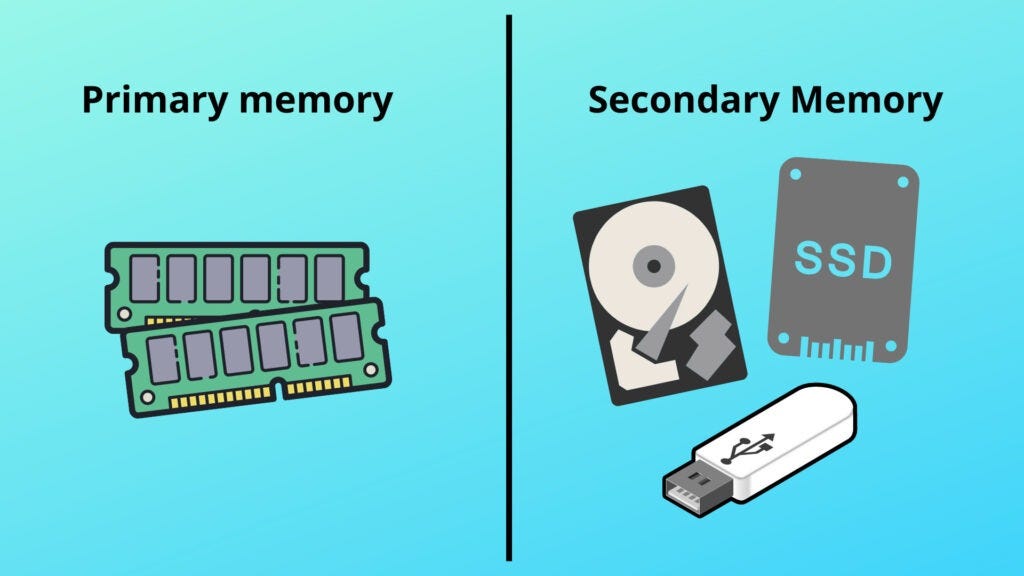Primary Memory vs. Secondary Memory
Primary and secondary memory are two essential components of a computer system, each serving distinct purposes.
Primary and secondary memory are two essential components of a computer system, each serving distinct purposes.
Primary Memory (RAM)
- Purpose: Stores data and instructions that the CPU needs to access immediately.
- Type: Volatile (contents are lost when the computer is turned off).
- Speed: Very fast access times.
- Capacity: Relatively small compared to secondary memory.
- Use: For active data and instructions.
- Purpose: Stores data and instructions that the CPU needs to access immediately.
- Type: Volatile (contents are lost when the computer is turned off).
- Speed: Very fast access times.
- Capacity: Relatively small compared to secondary memory.
- Use: For active data and instructions.
Secondary Memory
- Purpose: Stores data and instructions for long-term storage.
- Type: Non-volatile (contents are retained even when the computer is turned off).
- Speed: Slower access times compared to primary memory.
- Capacity: Typically much larger than primary memory.
- Use: For storing files, programs, and data that is not currently in use.
Key Differences
Feature Primary Memory (RAM) Secondary Memory Volatility Volatile Non-volatile Speed Very fast Slower Capacity Relatively small Typically larger Use Active data and instructions Long-term storage
In summary, primary memory is used for short-term storage and quick access, while secondary memory is used for long-term storage and can store larger amounts of data. The two types of memory work together to ensure efficient computer operation.
- Purpose: Stores data and instructions for long-term storage.
- Type: Non-volatile (contents are retained even when the computer is turned off).
- Speed: Slower access times compared to primary memory.
- Capacity: Typically much larger than primary memory.
- Use: For storing files, programs, and data that is not currently in use.
Key Differences
| Feature | Primary Memory (RAM) | Secondary Memory |
|---|---|---|
| Volatility | Volatile | Non-volatile |
| Speed | Very fast | Slower |
| Capacity | Relatively small | Typically larger |
| Use | Active data and instructions | Long-term storage |
In summary, primary memory is used for short-term storage and quick access, while secondary memory is used for long-term storage and can store larger amounts of data. The two types of memory work together to ensure efficient computer operation.





0 Comments